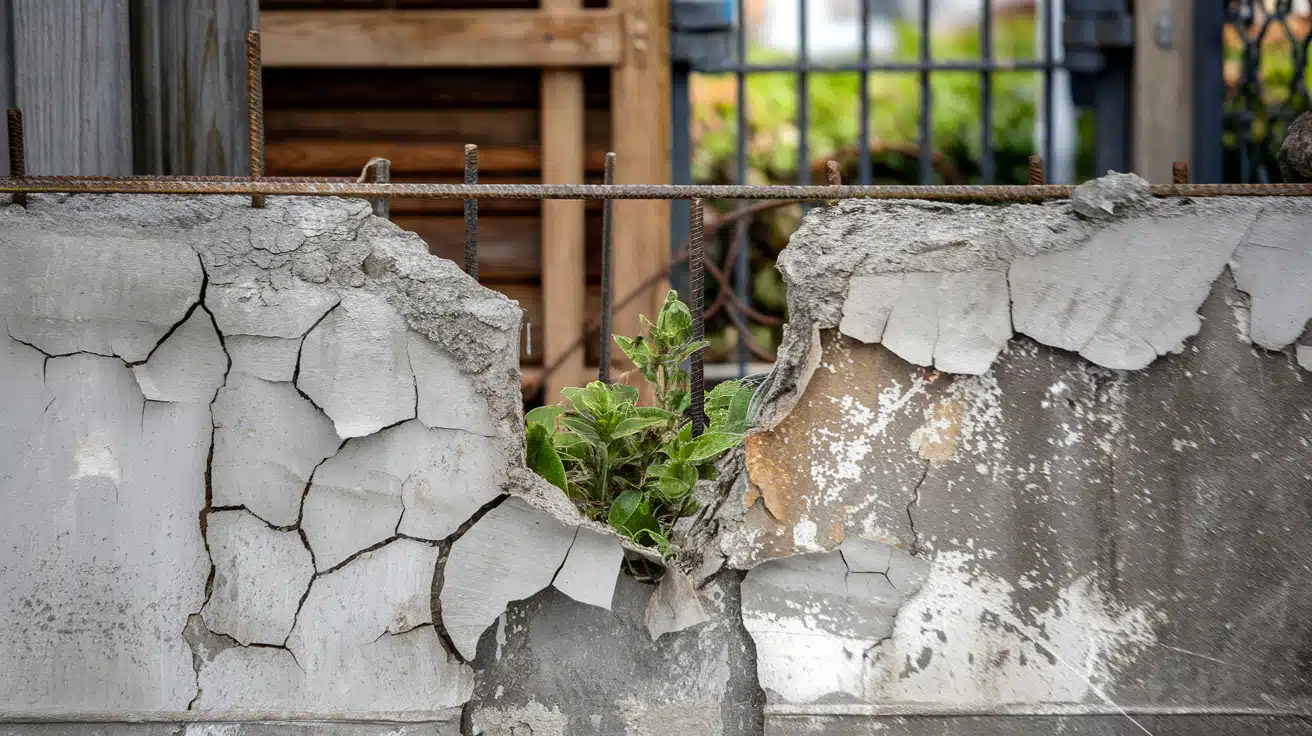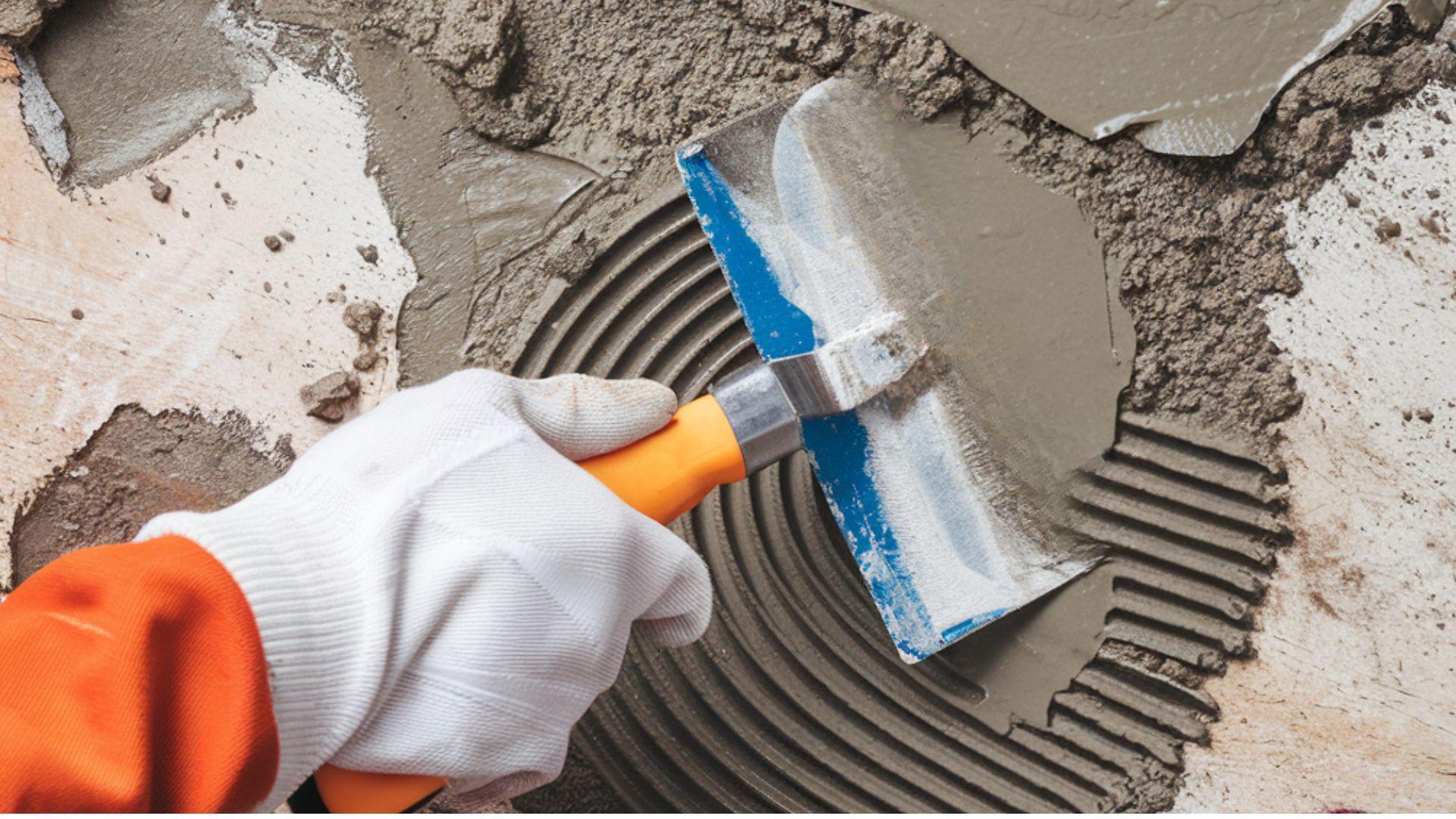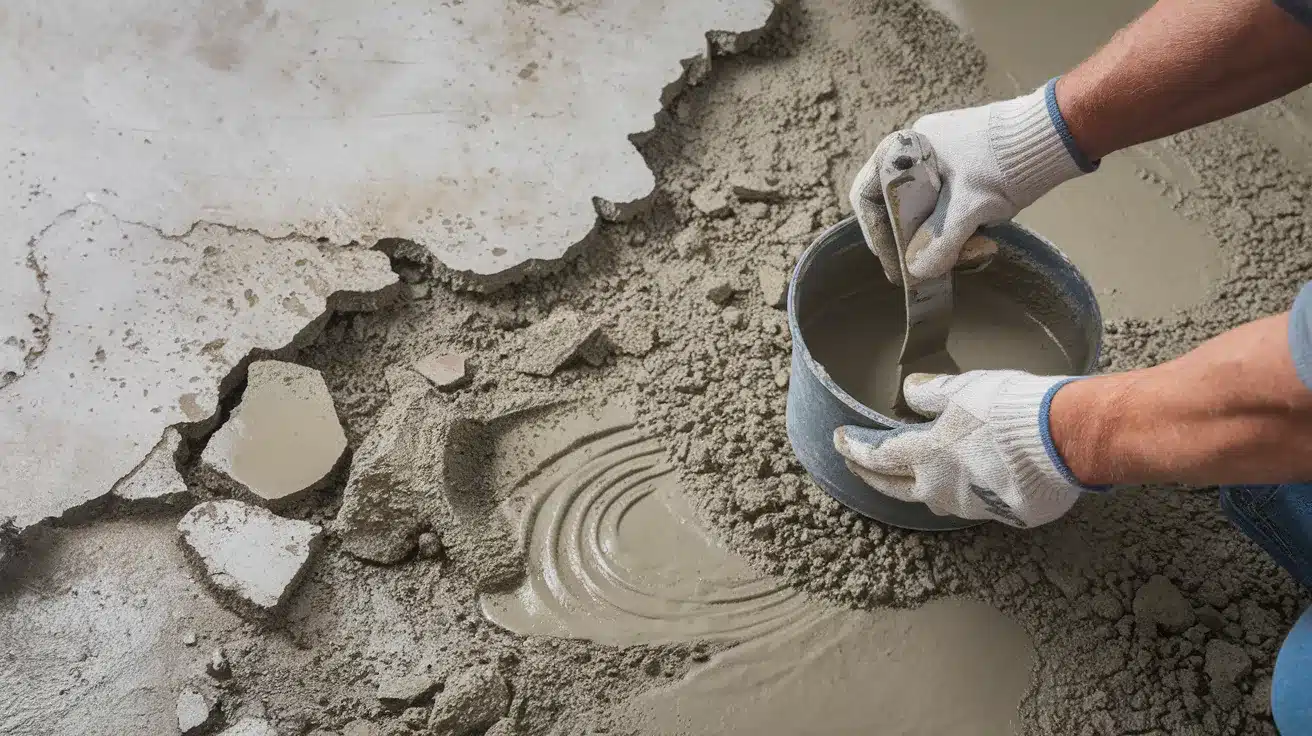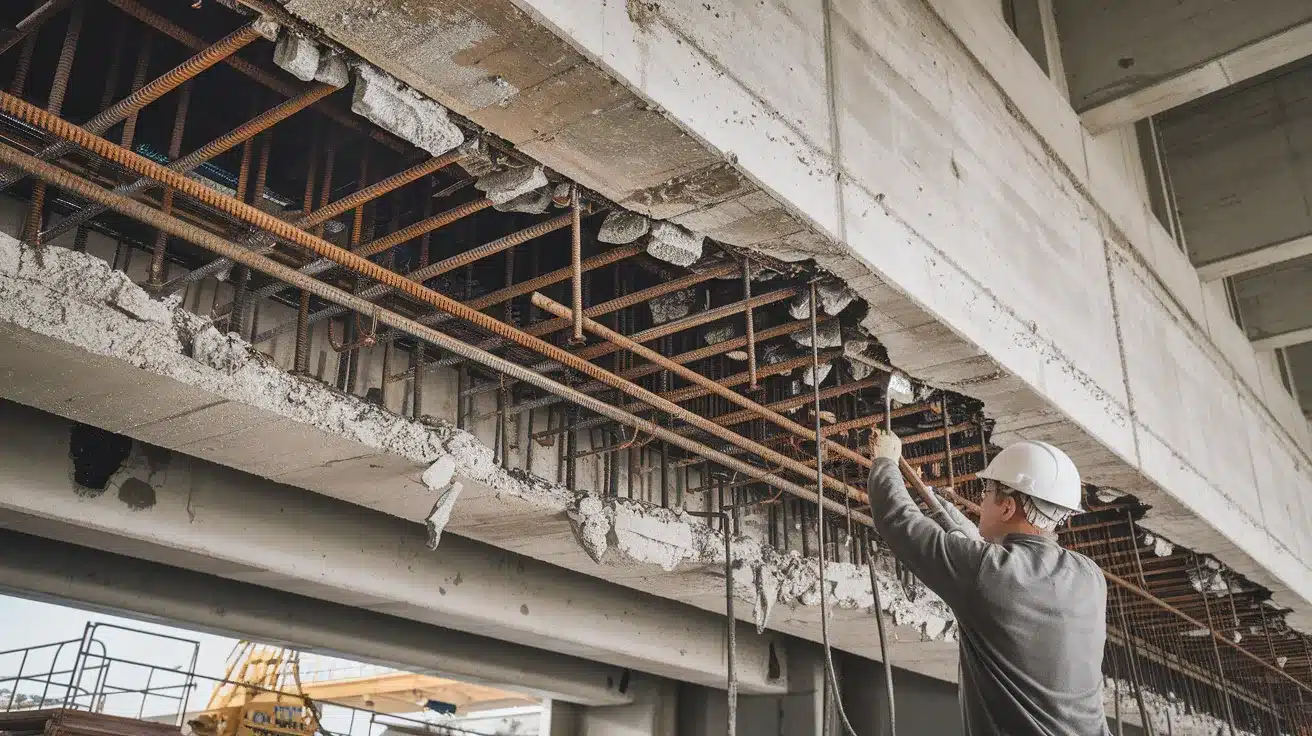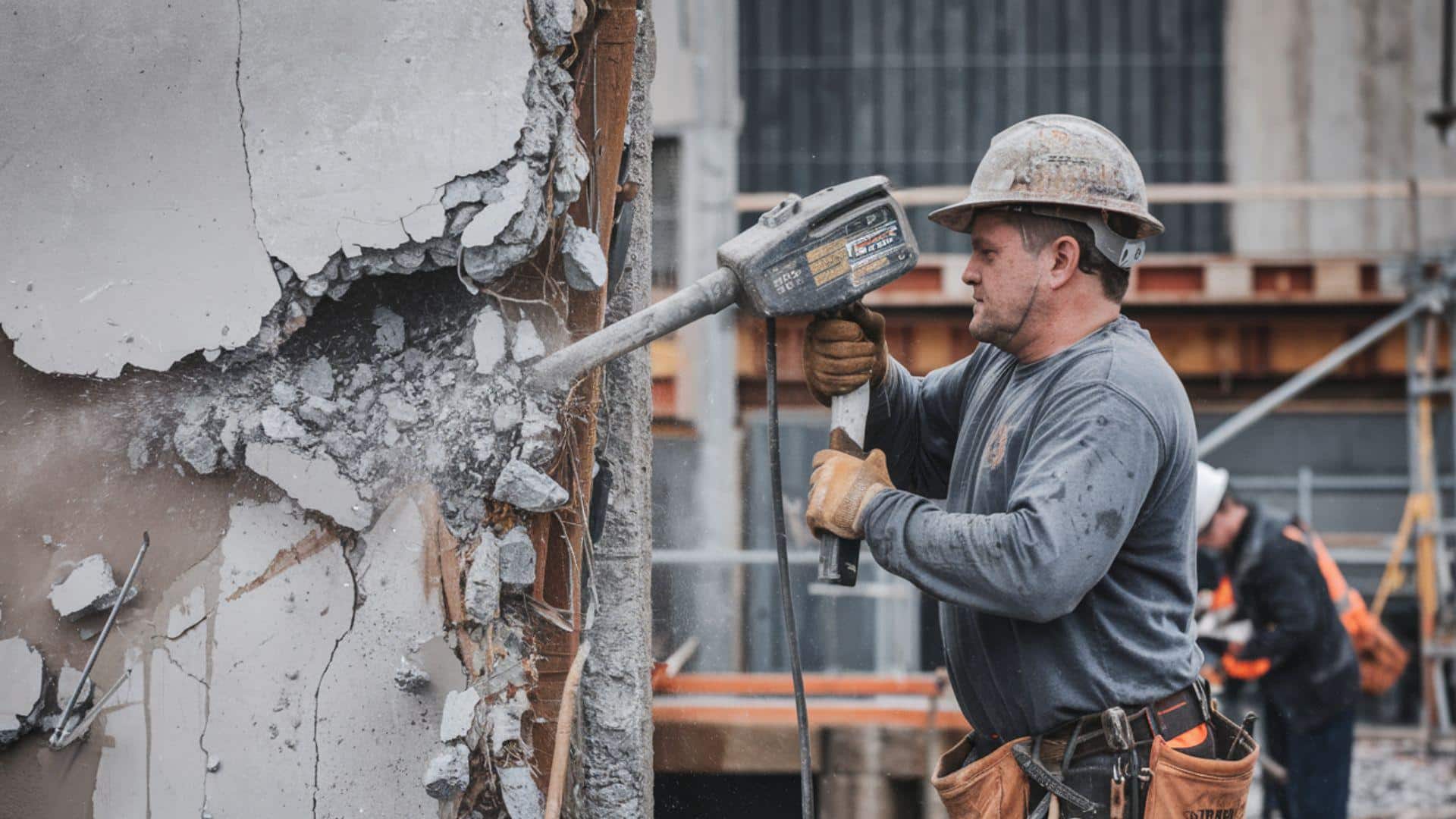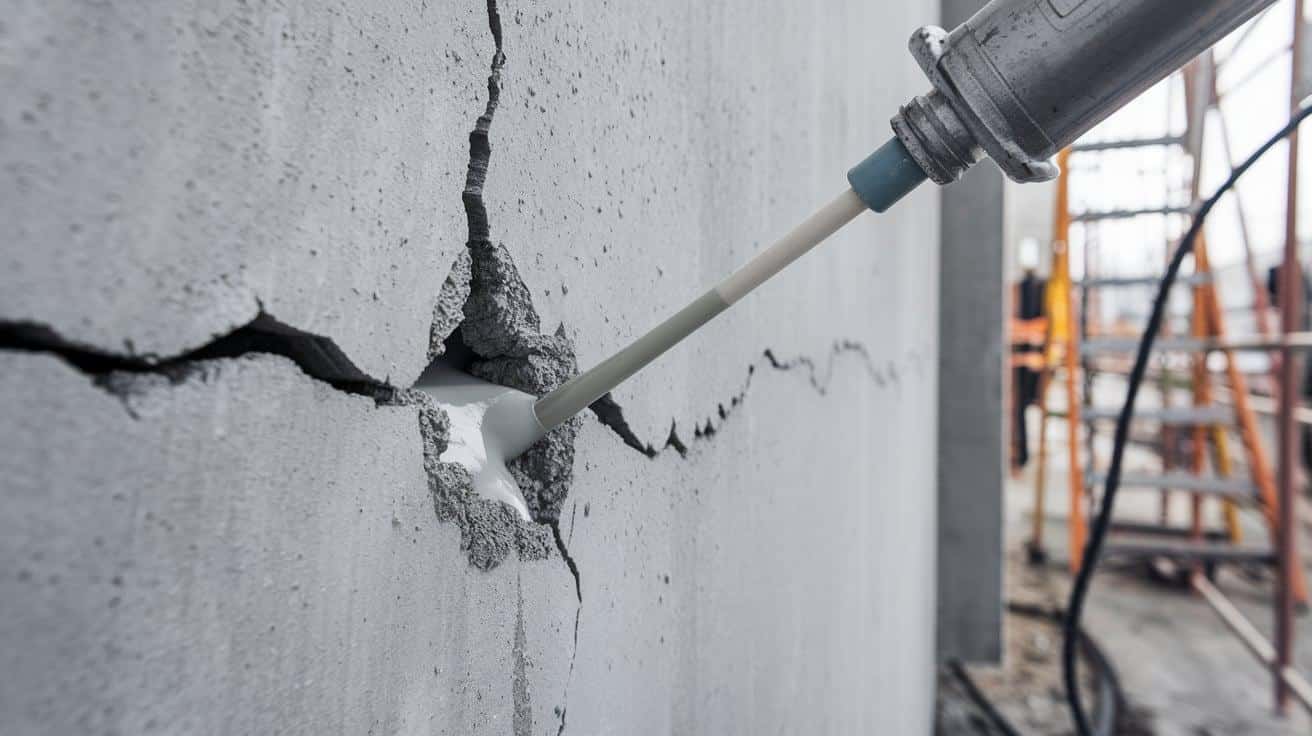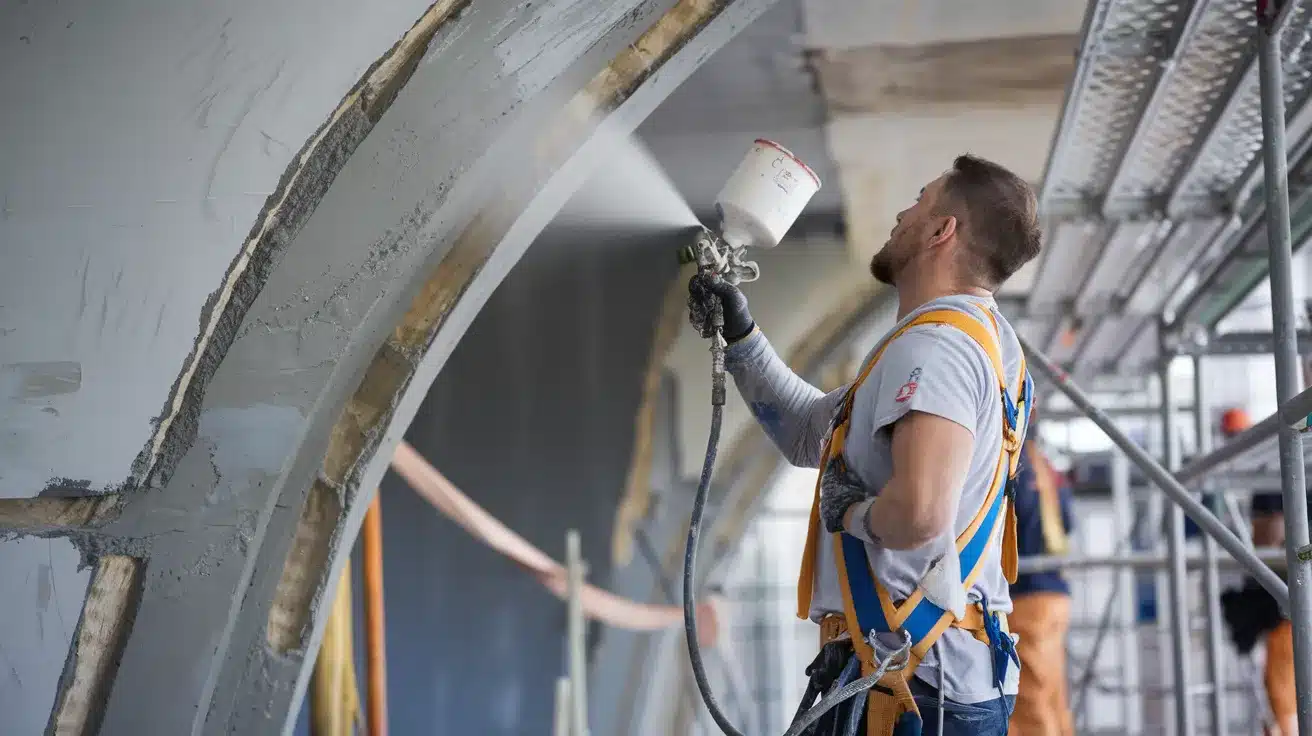I’ve seen countless property owners panic when they notice chunks of concrete falling from their buildings. The rough patches, rust stains, and crumbling surfaces can make any structure look unsafe and worn down.
But here’s what most people don’t realize: concrete spalling isn’t just a cosmetic problem. It’s a warning sign that your building’s structural integrity is at risk.
The good news? You can prevent major damage if you know what to look for and act quickly. Understanding the causes, effects, and solutions can save you thousands in repair costs.
I’ll walk you through everything you need to know about concrete spalling, from identifying the early warning signs to taking the right preventive steps. Let’s protect your investment before small problems become expensive disasters.
What is Concrete Spalling?
Concrete spalling refers to the breaking away or chipping of concrete surfaces. This happens when pieces of concrete break off from the main structure, leaving behind rough, damaged areas.
The process occurs when concrete loses its protective layer. Water seeps into small cracks and reaches the steel reinforcement bars inside. When these metal bars rust, they expand and create pressure from within. This internal pressure pushes against the concrete, causing it to crack and eventually break away.
Key characteristics of concrete spalling include
- Surface damage – Concrete pieces fall off, exposing the steel underneath
- Rough texture – The damaged area feels uneven and jagged
- Visible rust stains – Brown or orange marks appear around the damaged spots
- Progressive damage – The problem gets worse over time if left untreated
Types of Spalling Damage
| Type of Spalling | Description |
|---|---|
| Shallow Spalling | Only the surface layer breaks away |
| Deep Spalling | Damage extends to the steel reinforcement |
| Edge Spalling | Occurs at corners and edges of structures |
| Map Cracking | Creates a pattern of interconnected cracks |
Spalling affects both the strength and appearance of concrete structures. Early detection is crucial because the damage spreads quickly once it starts. Understanding what causes this problem helps property owners take steps to prevent it.
Causes of Concrete Spalling
Concrete spalling doesn’t happen overnight. Multiple factors work together to weaken the structure and cause pieces to break away. Understanding these causes helps you spot problems early and take preventive action.
- Water infiltration and moisture damage: Water enters through cracks and pores, reaching steel reinforcement bars, which then rust and expand, creating internal pressure that breaks concrete.
- Freeze-thaw cycles in cold climates: Water trapped inside concrete freezes and expands during winter, then thaws in warmer weather, repeatedly stressing the material until it cracks.
- Corrosion of steel reinforcement bars: Steel rebar rusts when exposed to moisture and oxygen, expanding up to seven times its original size and pushing concrete outward.
- Poor concrete quality and construction practices: Inadequate mixing, insufficient curing time, low-quality materials, or improper installation create weak spots that are prone to early failure and damage.
- Chemical attacks from environmental factors: Exposure to salt water, acid rain, de-icing chemicals, or industrial pollutants weakens concrete by breaking down its chemical structure over time.
- Structural overloading and excessive stress: Heavy loads beyond design capacity, vibrations from traffic or machinery, or settling foundations create cracks that allow water penetration and accelerate spalling.
Repair Techniques for Concrete Spalling
When concrete spalling occurs, quick action prevents further damage. The right repair method depends on how deep the spalling goes and how much area it covers. I’ll show you the most effective techniques professionals use to restore concrete structures.
1. Surface Patching for Minor Damage
Small areas of shallow spalling can often be fixed with simple patching compounds. Clean the damaged area thoroughly by removing all loose concrete pieces. Apply a bonding agent to help the new concrete stick properly. Mix the patching compound according to the manufacturer’s instructions and press firmly into the damaged area.
2. Polymer-Modified Concrete Repairs
For moderate spalling damage, polymer-modified concrete offers superior bonding and flexibility. These materials resist cracking better than traditional concrete patches.
The polymer additives make the repair material more durable and weather-resistant. Apply the polymer-modified concrete in thin layers for best results and proper curing.
3. Steel Reinforcement Restoration
When spalling exposes rusted steel bars, you must treat the corrosion before patching the concrete. Remove all concrete around the damaged steel until you reach sound material.
Clean the steel bars with sandblasting or wire brushing to remove all rust. Apply a rust-inhibiting primer designed for steel reinforcement.
4. Concrete Replacement Method
Large areas of deep spalling require complete concrete replacement. This technique provides the most durable long-term solution, but it costs more than surface repairs.
Cut out all damaged concrete using pneumatic tools or concrete saws. Install new reinforcement if needed, ensuring proper spacing and concrete cover thickness.
5. Injection Repair for Cracks
Active cracks that cause spalling need special attention to prevent water infiltration. Epoxy or polyurethane injection seals these cracks effectively.
Clean the crack thoroughly and install injection ports at regular intervals. Inject the repair material under low pressure, working from bottom to top for complete filling.
6. Protective Coating Application
After completing structural repairs, apply protective coatings to prevent future spalling. These coatings block water penetration and resist chemical attack.
Choose coatings based on your specific environment and exposure conditions. Apply coatings only to clean, dry surfaces for maximum effectiveness and proper adhesion.
Effects of Concrete Spalling
Concrete spalling creates a domino effect of problems that go far beyond cosmetic damage. The consequences impact safety, finances, and the long-term viability of structures. Here’s how spalling affects buildings and their owners.
1. Structural Integrity Compromise
Spalling weakens the entire concrete structure by exposing steel reinforcement to further corrosion. Once the protective concrete layer is gone, the steel bars rust faster and lose their strength. This creates a cycle where more concrete breaks away, leading to potential structural failure if not addressed quickly.
2. Safety Hazards and Risks
Falling concrete pieces pose serious dangers to people walking or working below damaged structures. Sharp concrete fragments can cause injuries, while weakened beams or columns may collapse without warning. Property owners face liability issues when spalling creates unsafe conditions for occupants and visitors.
3. Increased Repair and Maintenance Costs
Early spalling damage is cheaper to fix than extensive structural repairs later. Small areas of spalling can be patched relatively easily, but widespread damage requires costly concrete replacement, steel reinforcement work, and temporary structural support during repairs.
4. Reduced Property Value and Appearance
Spalling makes buildings look old and poorly maintained. Visible concrete damage, rust stains, and rough surfaces significantly reduce property values and curb appeal. Commercial properties may struggle to attract tenants when concrete structures appear unsafe or deteriorated.
5. Water Damage and Further Deterioration
Exposed steel and open concrete surfaces allow more water to enter the structure. This accelerates the spalling process and can lead to additional problems like mold growth, interior water damage, and freeze-thaw cycles that cause even more concrete to break away.
Preventive Measures for Concrete Spalling
Taking the right steps early can save you from costly repairs later. Prevention is always better than a cure when it comes to concrete spalling. These measures help protect your concrete structures for years to come.
- Apply waterproof coatings and sealers – Use high-quality concrete sealers every few years to block moisture penetration and protect steel reinforcement from water damage and corrosion.
- Ensure proper drainage around structures – Install gutters, downspouts, and drainage systems to direct water away from concrete surfaces and prevent pooling that leads to spalling.
- Use corrosion-resistant steel reinforcement – Choose galvanized or epoxy-coated rebar during construction to slow down rusting and extend the life of concrete structures significantly.
- Maintain adequate concrete cover thickness – Ensure steel reinforcement has sufficient concrete protection (typically 1-2 inches) to shield it from moisture, chemicals, and environmental exposure.
- Regular inspection and maintenance schedule – Check concrete surfaces quarterly for cracks, stains, or damage, and repair small problems immediately before they become major structural issues.
- Control environmental factors and exposure – Limit exposure to de-icing salts, chemicals, and harsh weather by using protective barriers or covers when possible.
Conclusion
Concrete spalling may start as small chips and cracks, but it quickly becomes a serious threat to your building’s safety and value.
From water infiltration to steel corrosion, the causes are preventable when you know what to watch for.
The key is acting fast. Regular inspections, proper drainage, and quality sealers can save you thousands in repair costs.
When damage does occur, the right repair technique makes all the difference between a temporary fix and a lasting solution.
Don’t wait for chunks of concrete to start falling. Your building’s structural integrity depends on addressing spalling before it spreads. Take a walk around your property this week and look for early warning signs.
What concrete issues have you noticed on your property?

